Menu
Over the past year we’ve been immersing ourselves in coding in the classroom: researching, running workshops with Melissa Seco and adding new products like Cubetto.

Louise Kool has been focusing on unplugged, off-screen coding, while our sister company, Bridges has been looking at how learning to code can be made accessible for students with disabilities. (see Bridges posts -- Insights from ISTE 2017 and Cubetto Robot Kit Brings Coding to Students with Special Needs)
Over the next few weeks we’ll share what we’ve learned so far about coding for early learners in a series of blog posts. (We’d love to hear about your experiences with coding in your classroom. Just comment on the posts below.)
The essence of coding is creating a repeatable sequence of events that achieves a concrete goal. The steps and skills that are vital to the process reflect core competencies that can be extended to almost all curricular areas.
Unlike the popular cliché of the programmer hacking away in a dark room by themselves, coding is in fact extremely collaborative. In the workplace, diverse teams in multiple locations (and sometimes around the world) work together to solve coding problems.
Regardless, the competences associated with coding is not just about apps and tech!
How we code an app for our phones, tablets and computers could change unrecognizably in the time it takes for today's kindergartener to enter the workforce. But the logic, creative problem solving, and very importantly – team work that is at the heart of coding will not.
These proficiencies are essential to environments as diverse as a factory floor, a restaurant kitchen, a laboratory, backstage at a theatre, an animation studio and almost any other workplace.
Movements like Hour of Code and Ladies Learning Code have pushed coding in the classroom to the fore. School districts and ministries across Canada (here are some articles about BC and Ontario) have announced various initiatives, mirroring educational jurisdictions around the world.
Though the merits of teaching children as young as 5 how to program computers, as they are doing in Britain may be open to debate, the value of teaching coding's core competencies -- logical thinking, careful observation and creative problem solving in teams -- is hard to argue against. Particularly since coding lends itself so well to a play to learn approach and in the early years, doesn't need to involve tablets, laptops, or any device at all.
In future posts we'll look at how not only simple robots like STEM Robot Mouse Coding Activity Set and Cubetto Coding Robot Playset can be a part of discovering coding but also marble runs, board games, physical games with choreography can develop the skill that support coding.
We'll also explore the cross-curricular possibilities of coding and how it can be not just a proficiency to develop but a means to reflect and express learning. So not only learning to code but coding to learn.
And we'll share resources, ideas and instructional tools that support coding in the early years classroom in the context of a child care centre, school or after school program.
Want to get a preview of some specific products and resources? EXPLORE our Coding Collection here.

Request your NEW 2024 Louise Kool Early Years catalogue, with new products and expanded categories!

Let us help you realize an inspiring learning environment with unmatched expertise and service.

We are here to help. From Budgeting to Room and Centre Planning we have the answers you're looking for.

If you have a questions regarding existing orders or quotes don't hesitate to contact us.
1-800-268-4011
service@louisekool.com

© 2025, Louise Kool & Galt Powered by Shopify
